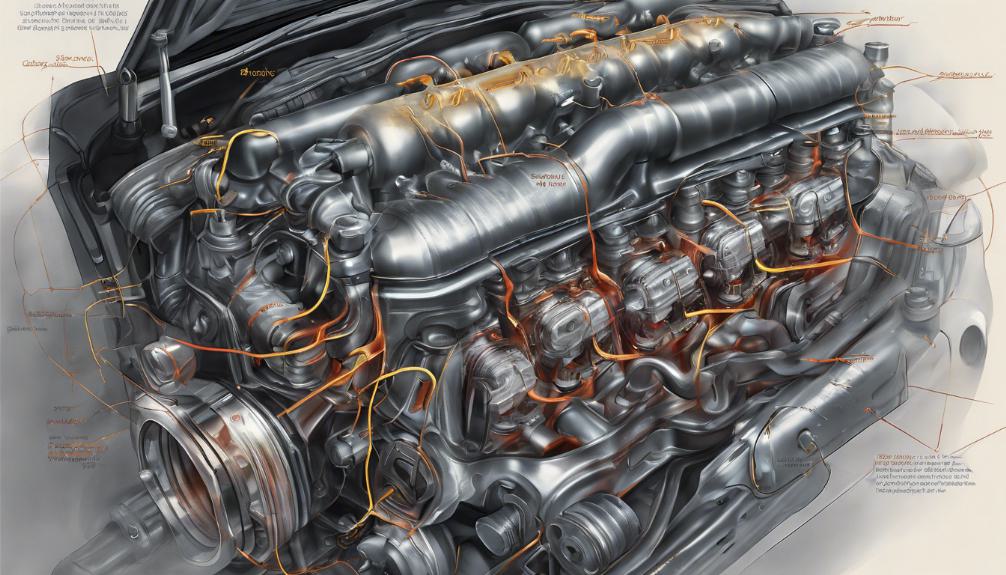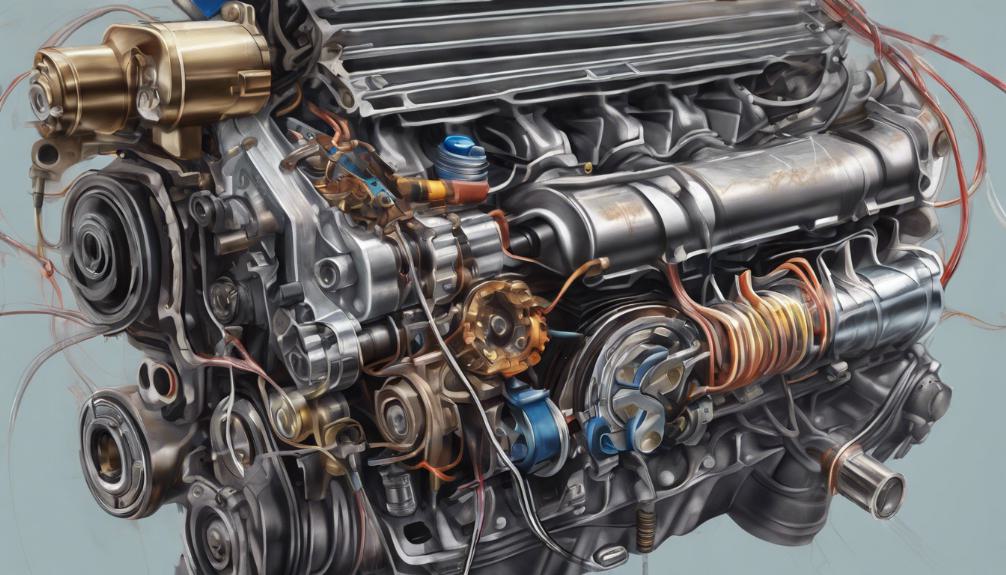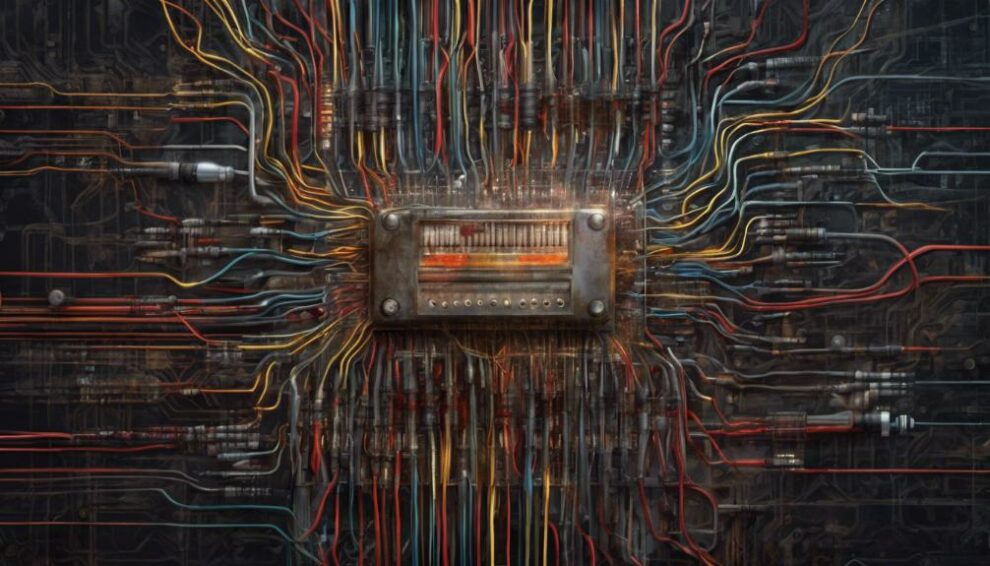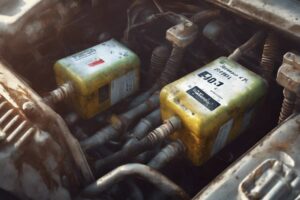When facing the P0353 code regarding Ignition Coil C Circuit, pinpointing the root electrical issues is crucial for efficient troubleshooting. Investigate primary causes like damaged coil pack connector wires.
Engage in thorough diagnostic steps such as voltage testing and resistance checks for precise evaluation. Recognize the importance of consistent engine ground checks to avoid erratic circuit problems.
Globally scan for clues using voltage tests and signal analyzers. Understand throttle position and pedal sensor codes for best calibration. Prioritize secure, corrosion-free connections and adherence to manufacturer’s procedures.
Accurate identification and resolution of ignition coil problems are key. Further insights await in your exploration.
Key Points
- Importance of thorough electrical connection examination for P0353 diagnosis.
- Voltage testing for confirmation of proper voltage in ignition coil circuit.
- Resistance checks essential for assessing circuit integrity.
- Identification of faulty components crucial in resolving P0353 error.
- Systematic inspection of primary and secondary circuits for accurate diagnosis.
Common Causes of P0353 Error Code

When diagnosing the P0353 error code, look for common causes such as broken wires at the coil pack connector.
Ignition coil maintenance is vital in preventing issues like the P0353 code from appearing.
Regularly checking the condition of the ignition coil, ensuring proper connections, and replacing worn-out coils can help avoid faults triggering this error code. Then, thorough electrical system troubleshooting is essential.
Inspect the primary and secondary circuits for any signs of wear, corrosion, or damage that could lead to the P0353 error code.
By carefully examining the electrical components related to the ignition system, such as spark plug wires and plugs, you can pinpoint potential issues before they escalate.
Proper maintenance and proactive troubleshooting of the electrical system can greatly reduce the likelihood of encountering the P0353 error code.
Diagnostic Steps for Ignition Coil C Circuit
To effectively diagnose the Ignition Coil C Circuit, start by thoroughly examining the electrical connections and components for any signs of wear or damage.
Conduct voltage testing to confirm that the proper voltage is reaching the ignition coil. Check for any fluctuations or irregularities that could indicate an issue with the electrical supply.
Also, perform resistance checks to assess the resistance levels within the circuit. An unusually high or low resistance reading could indicate a faulty component.
By carefully testing both the voltage and resistance levels, you can pinpoint the source of the problem causing the P0353 error code.
Remember to pay close attention to potential issues like broken wires at the coil pack connector or a faulty ignition coil.
By systematically checking these essential elements, you can effectively diagnose and address the Ignition Coil C Circuit problem.
Importance of Engine Ground Checks

Start by recognizing that engine ground checks play a significant role in maintaining the integrity of the ignition coil circuit and diagnosing potential electrical issues effectively.
Proper engine grounding is essential for ensuring a stable electrical connection that allows the ignition coil to function at its best.
By checking engine grounds regularly, you can prevent intermittent circuit malfunctions that might trigger error codes like P0353.
Inadequate or faulty engine grounding can result in erratic performance and even cause damage to essential ignition components.
To reap the benefits of reliable engine ground checks, it’s advisable to include them in your routine maintenance strategies.
By incorporating these checks into your maintenance routine, you can help safeguard your vehicle’s electrical system integrity and ensure excellent performance of the ignition coil circuit.
Regular inspection and maintenance of engine grounds are key practices that can contribute to the overall health and efficiency of your vehicle’s electrical system.
Utilizing Global Scanners for Diagnosis
Global scanners play an essential role in diagnosing electrical issues swiftly and accurately by retrieving detailed diagnostic trouble codes (DTCs) from a vehicle’s onboard computer system.
When utilizing global scanners for diagnosis, consider the following:
- Voltage Testing: Global scanners enable you to conduct voltage testing on various components, including ignition coils, to identify irregularities in electrical supply that may affect performance.
- Signal Analysis: These scanners provide tools for in-depth signal analysis, allowing you to assess the integrity of signals sent between different vehicle systems, aiding in pinpointing the root cause of electrical faults.
- Live Data Streaming: Global scanners offer live data streaming capabilities, granting you access to real-time sensor readings and system performance metrics.
This feature aids in monitoring the vehicle’s electrical health and diagnosing issues promptly.
How Does the Distributor in My Car’s Ignition System Relate to the P0353 Code for Ignition Coil C Circuit?
The car ignition system distributor plays a pivotal role in the overall functioning of the engine. When the P0353 code for Ignition Coil C Circuit appears, it signifies a potential issue with the distributor. Understanding its role is crucial in resolving this code and ensuring the smooth operation of the ignition system.
Understanding Throttle Position/Pedal Codes

Understanding Throttle Position/Pedal Codes provides essential diagnostic insights into throttle and pedal sensor circuits, aiding in efficient troubleshooting of related issues.
Sensor calibration is vital for the proper functioning of throttle and pedal sensors. These sensors detect the position of the throttle plate and accelerator pedal, sending signals to the engine control module.
Voltage fluctuations in these circuits can lead to incorrect sensor readings, causing issues like poor acceleration or stalling.
Throttle position/pedal codes stored in the vehicle’s Factory Service Manual help identify problems with these sensors.
By interpreting these codes correctly, you can pinpoint intermittent circuit issues affecting throttle response.
Understanding the significance of these codes guides you in diagnosing and resolving throttle-related malfunctions effectively.
It’s important to pay attention to sensor calibration and voltage fluctuations to ensure the accurate operation of throttle and pedal sensors, contributing to the overall performance of your vehicle.
User Tips for Effective Troubleshooting
When troubleshooting ignition coil circuit issues, make sure to carefully verify power and ground connections for proper electrical flow. To effectively troubleshoot ignition coil problems, consider the following user recommendations:
- Check Electrical Connections: Confirm that all electrical connections related to the ignition coil are secure and free of corrosion.
Loose or corroded connections can disrupt the electrical flow, leading to circuit malfunctions.
- Inspect Wiring for Damage: Thoroughly examine the coil pack connector for any signs of broken or frayed wires. Damaged wiring can impede the proper functioning of the ignition coil circuit, triggering error codes like P0353.
- Follow Diagnostic Procedures: Adhere to the manufacturer’s guidelines and diagnostic procedures when troubleshooting ignition coil issues.
Following the recommended steps ensures accurate identification of the problem and effective resolution.
As an Amazon Associate we earn from qualifying purchases.










